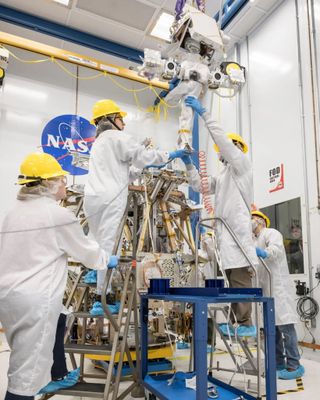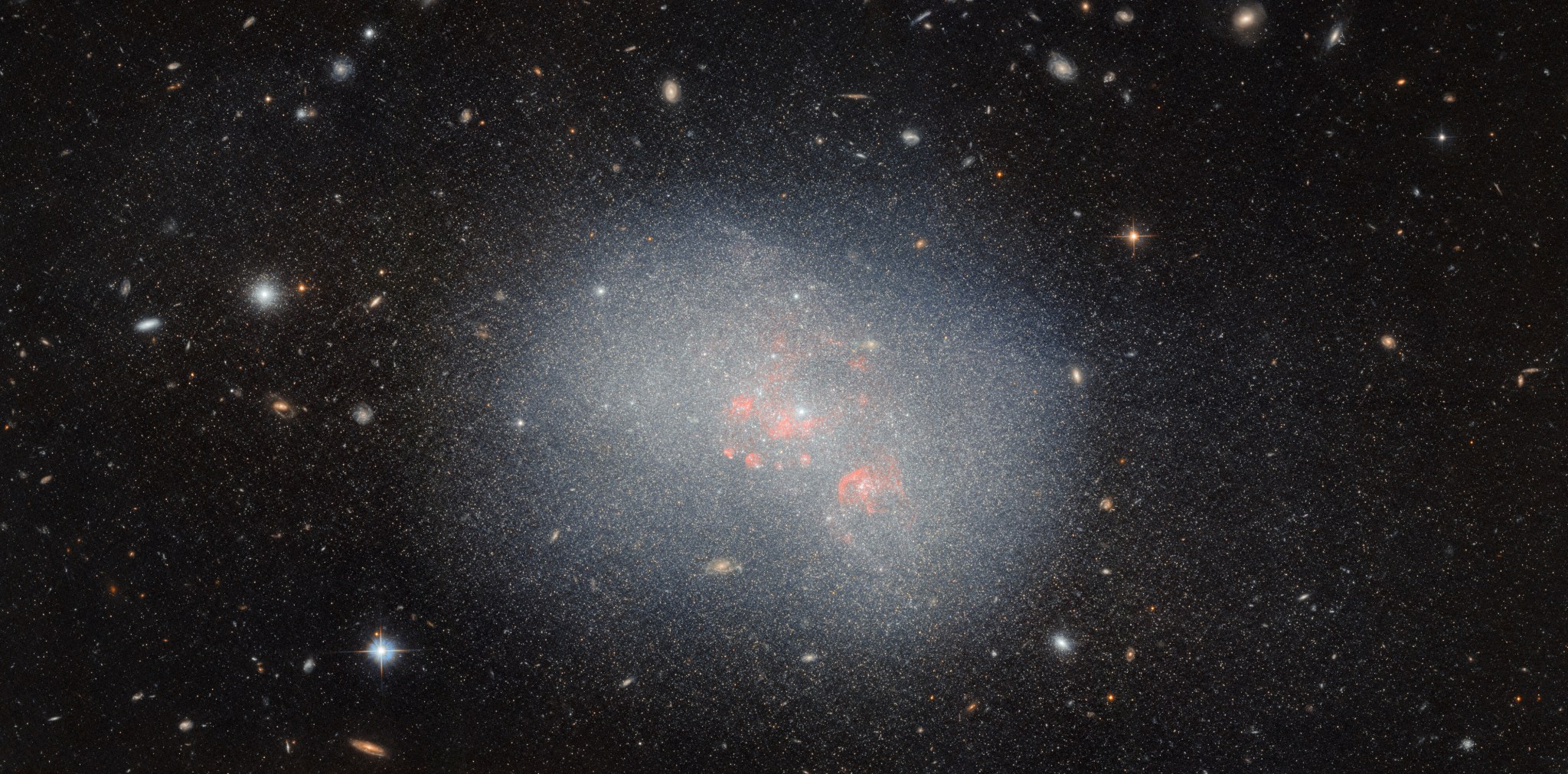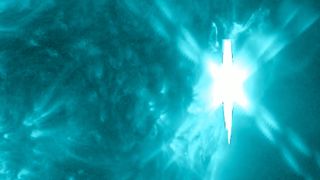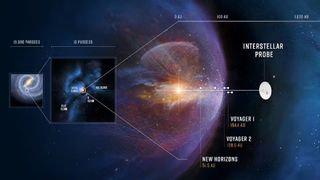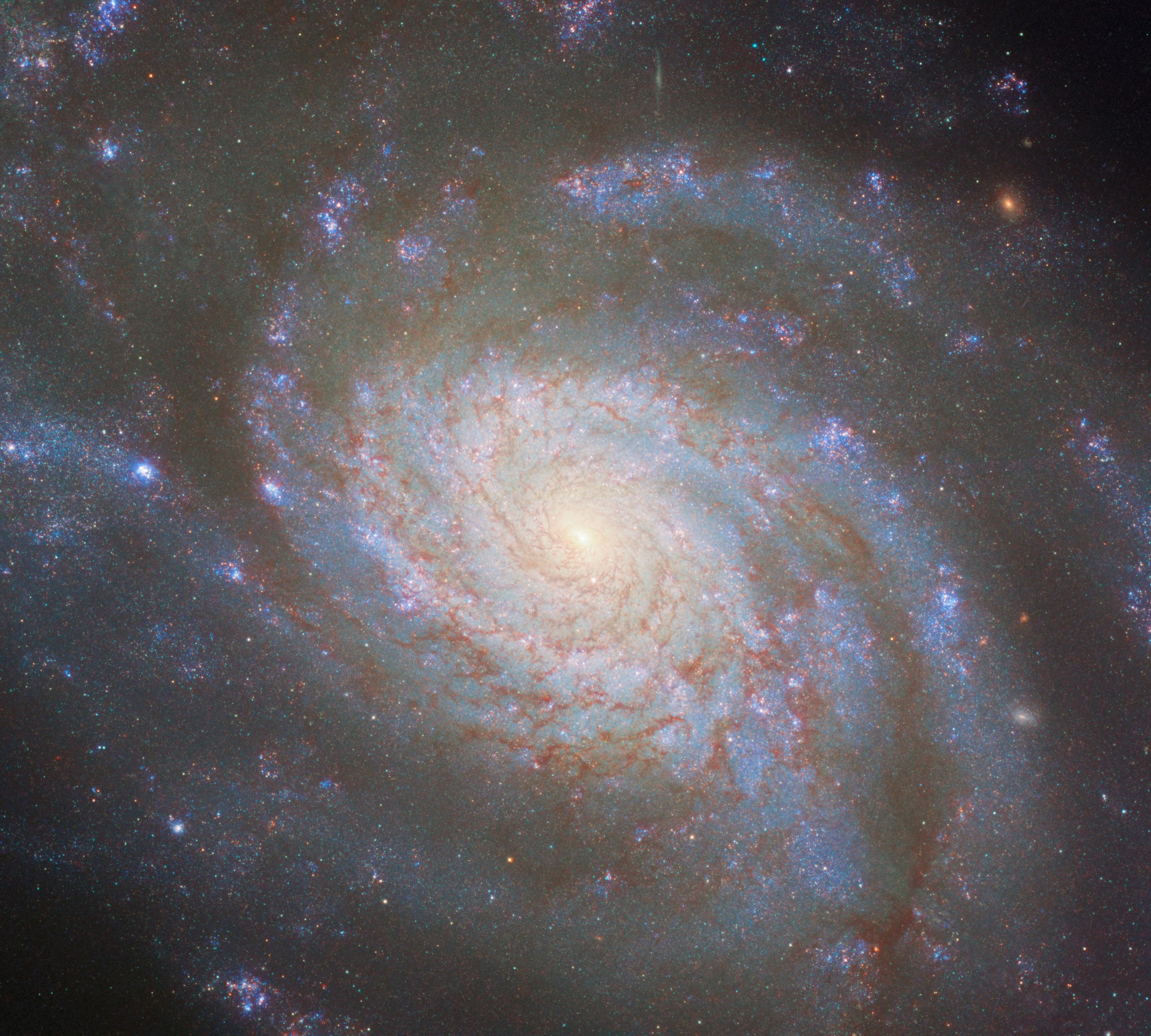6 Min Read NASA’s Webb Images Cold Exoplanet 12 Light-Years Away This image of the gas-giant exoplanet Epsilon Indi Ab was taken with the coronagraph on NASA’s James Webb Space Telescope’s MIRI (Mid-Infrared Instrument). A star symbol marks the location of the host star Epsilon Indi A, whose light has been blocked by the coronagraph, resulting in the dark circle marked with a dashed white line (full image below) An international team of astronomers using NASA’s James Webb Space Telescope has directly imaged an exoplanet roughly 12 light-years from Earth.…
Read MoreTag: The Universe
Europe on the moon: ESA targeting 2031 for 1st ‘Argonaut’ lunar lander mission
A European moon lander being developed to provide the continent autonomous access to the moon is targeted to launch in 2031, according to a development call published last week by the European Space Agency (ESA). The robotic lander, called Argonaut, is expected to lift off on an Ariane 6 rocket, which after a long series of delays made its debut flight on July 9. ESA wants Argonaut to perform multiple deliveries of cargo and science instruments to the moon. The lander will be capable of ferrying up to 4,600 pounds…
Read More‘A dark day for lunar science:’ Scientists shocked as NASA cancels VIPER moon rover
It is a classic wait-a-minute Moon moment. The message from NASA last week: “NASA Ends VIPER Project, Continues Moon Exploration.” The space agency’s Volatiles Investigating Polar Exploration Rover (VIPER) project had undergone a comprehensive internal review. NASA found price tag sticker shock, delays to the launch date, and risk of future cost growth – reasons to “stand down” the lunar ice-hound mission. Some disassembly required At this point in time, NASA had put in $450 million into VIPER. NASA said it’s planning to disassemble and reuse VIPER’s instruments and components…
Read MoreHubble Studies a Potential Galactic Merger
3 min read Hubble Studies a Potential Galactic Merger This NASA/ESA Hubble Space Telescope image captures the dwarf irregular galaxy NGC 5238. ESA/Hubble & NASA, F. Annibali This NASA/ESA Hubble Space Telescope image features the dwarf irregular galaxy NGC 5238, located 14.5 million light-years from Earth in the constellation Canes Venatici. Its unexciting, blob-like appearance seems to resemble an oversized star cluster more than a classic image of a galaxy. Its lackluster appearance belies its complicated structure, which is the subject of a great deal of research. As the image…
Read MoreSun blasts out 2nd X-class flare this week, triggers more radio blackouts (video)
The sun continues firing off solar flares during what has been a period of intense activity. Sunspot AR3738 might be making its exit as it rotates out of our view on the sun’s western limb, but not before firing off a powerful X-class solar flare, the strongest of its kind. The solar flare from sunspot AR3738 occurred Tuesday morning (July 16) at 9:26 a.m. EDT (1326 GMT). A shortwave radio blackout in conjunction with the latest event was reported over mostly the Atlantic Ocean and also noted across much of Africa, Europe, and…
Read MoreNASA’s Webb Investigates Eternal Sunrises, Sunsets on Distant World
6 Min Read NASA’s Webb Investigates Eternal Sunrises, Sunsets on Distant World Artists concept of WASP-39 b (full image below). Near-infrared spectral analysis of terminator confirms differences in morning and evening atmosphere Researchers using NASA’s James Webb Space Telescope have finally confirmed what models have previously predicted: An exoplanet has differences between its eternal morning and eternal evening atmosphere. WASP-39 b, a giant planet with a diameter 1.3 times greater than Jupiter, but similar mass to Saturn that orbits a star about 700 light-years away from Earth, is tidally locked…
Read MoreScientists call the region of space influenced by the sun the heliosphere – but without an interstellar probe, they don’t know much about its shape
This article was originally published at The Conversation. The publication contributed the article to Space.com’s Expert Voices: Op-Ed & Insights. Sarah Spitzer is a research fellow in Climate and Space Sciences and Engineering at the University of Michigan. The sun warms the Earth, making it habitable for people and animals. But that’s not all it does, and it affects a much larger area of space. The heliosphere, the area of space influenced by the sun, is over a hundred times larger than the distance from the sun to the Earth. The sun is a…
Read MoreIs Earth’s weather getting weirder?
Severe turbulence, record rainfall, killer heatwaves and raging wildfires to name but a few: is it just me, or is “Is Earth’s weather getting weirder?” The answer? Yes. Well, sort of. These weather events have happened in the past, but the problem is nowadays they’re happening more frequently and to a far greater extent. What’s causing this uptick in “global weirding” and is there anything we can do about it? Space.com spoke with a leading climate scientist Katharine Hayhoe to learn more about this strange surge in weird weather events…
Read MoreVivid Portrait of Interacting Galaxies Marks Webb’s Second Anniversary
6 Min Read Vivid Portrait of Interacting Galaxies Marks Webb’s Second Anniversary Webb’s view of the interacting galaxies of Arp 142 that combines Webb’s NIRCam and MIRI instrument images. Full image below. Two for two! A duo of interacting galaxies commemorates the second science anniversary of NASA’s James Webb Space Telescope, which takes constant observations, including images and highly detailed data known as spectra. Its operations have led to a “parade” of discoveries by astronomers around the world. “Since President Biden and Vice President Harris unveiled the first image from…
Read MoreHubble Measures the Distance to a Supernova
3 min read Hubble Measures the Distance to a Supernova This NASA/ESA Hubble Space Telescope image features the galaxy NGC 3810. ESA/Hubble & NASA, D. Sand, R. J. Foley Measuring the distance to truly remote objects like galaxies, quasars, and galaxy clusters is a crucial task in astrophysics, particularly when it comes to studying the early universe, but it’s a difficult one to complete. We can only measure the distances to a few nearby objects like the Sun, planets, and some nearby stars directly. Beyond that, astronomers need to use…
Read More

